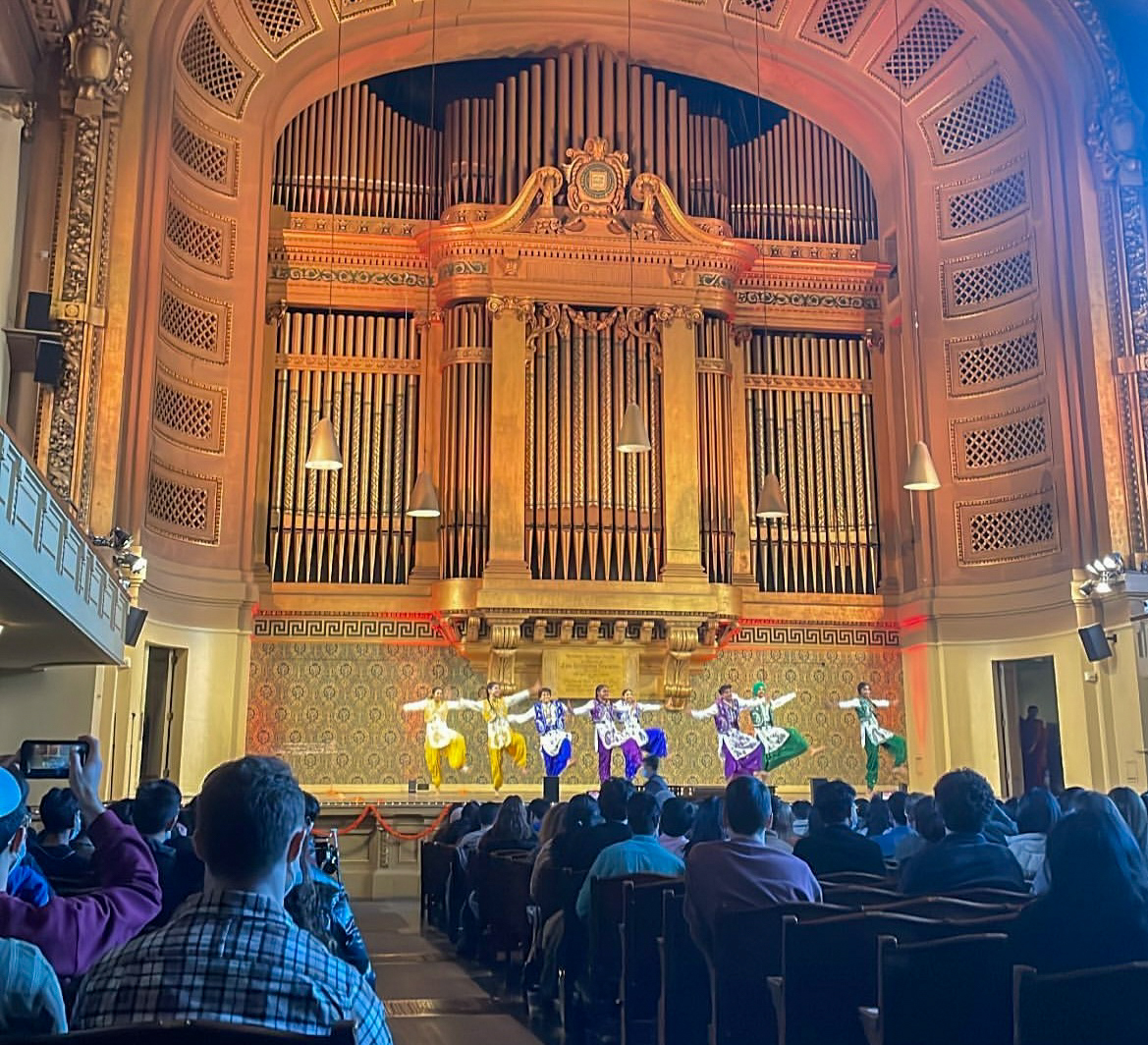Roshni lights up Woolsey Hall with annual performance
The showcase — named for Hindi word for “light” — featured four of Yale’s South Asian dance teams alongside four acts from first-years, sophomores, juniors and seniors.

Courtesy of Luke Tillitski
Last Saturday, Yale’s South Asian Society hosted their annual first semester dance showcase, Roshni, in Woolsey Hall.
Roshni — meaning “light” in Hindi — featured four of Yale’s South Asian dance teams alongside four acts from first-years, sophomores, juniors and seniors. The event also included individual acts like singing and juggling. Yale’s four teams regularly perform around campus and each boasts a distinct style of South Asian dance.
Kalaa, which opened the showcase, performs classical Bharatanatyam, Kathak and Kuchipudi styles of Indian dance. The group practiced weekly for two hours and every day leading up to the Woolsey Hall performance.
“Kalaa is usually for people that have had dance experience before,” Maanasa Nandigam ’25 told the News.
MonstRAASity — a play on the word “Raas,” a form of Gujarati folk dance — followed Kalaa. The dance style was faster-paced than the slower, traditional Kalaa, and performers held sticks that clicked together on various beats.
Raas is predominantly performed in the Indian state of Gujarat and, as such, cultivates a strong sense of Gujarati community on campus.
“It means a lot,” Raj Pandya ’24 told the News. “There’s nothing else on campus that’s specifically for Gujuratis so it’s really nice to connect with them [other members].”
The Jashan Bhangra team came next, adorned in customized bhangra wear embroidered with a sparkling “Y” on the back. The clothing was uniformly shimmering and colorful, with splashes of light greens, purples, blues and yellows. Bhangra’s costuming, like that of all of the other dance teams at Roshni, embraced South Asia’s celebration of colors.
Yale’s Bhangra team is competitive and performs at national competitions. It involves faster-paced music similar to Raas, often emphasizing songs from Punjab — the state in India where Bhangra originates.
A notable diversity of members comprise Yale’s Bhangra team, as none of the groups are exclusive to South Asian auditionees.
“We are an open team to people who are not Punjabi and that makes the team much better,” Chiraag Sachdev ’26 told the News.
He continued that he appreciates the diversity of cultural perspectives represented by the team.
Rangeela closed the team dance segment of the showcase, performing recognizable Bollywood hits like “Badtameez Dil” while also fusing sound bites of Western and hip-hop oriented music into their setlist. Rangeela’s modern palate of both genres is familiar to many in the South Asian community, especially those who grew up in America.
“As somebody who listens to a lot of Bollywood music and hip-hop, being able to dance to the music I’ve been hearing since I was little was something I couldn’t pass up,” Pranav Pattatathunaduvil ’25 told the News.
Dhvani, a new classical Indian music group featuring Carnatic and Hindustani vocalists and musicians, also performed at the showcase.
In addition to Yale’s South Asian music and dance teams, a number of class and individual acts shined in this year’s Roshni. The class acts — performed by a small group of South Asian Society students from each year — competed with one another through an audience cheer meter. The senior dance team came out victorious with a resounding cheer of applause after their performance.
The individual acts involved a number of singing and technical acts. Pranav Pattatathunaduvil ’25, Shrea Tyagi ’25 and Ojas Mehta ’25 all sang Bollywood songs while Arnav Narula ’25 shared a juggling performance.
“Attending Roshni was a wonderful experience that allowed me to connect back to my Indian roots and heritage,” audience member Avi Patel ’26 said. “It allowed me to regain a sense of my culture amidst the busy life of a Yale student.”
The South Asian Society hosts one main dance event for each semester. Its next showcase, Dhamaal, will occur between March and April 2023.







